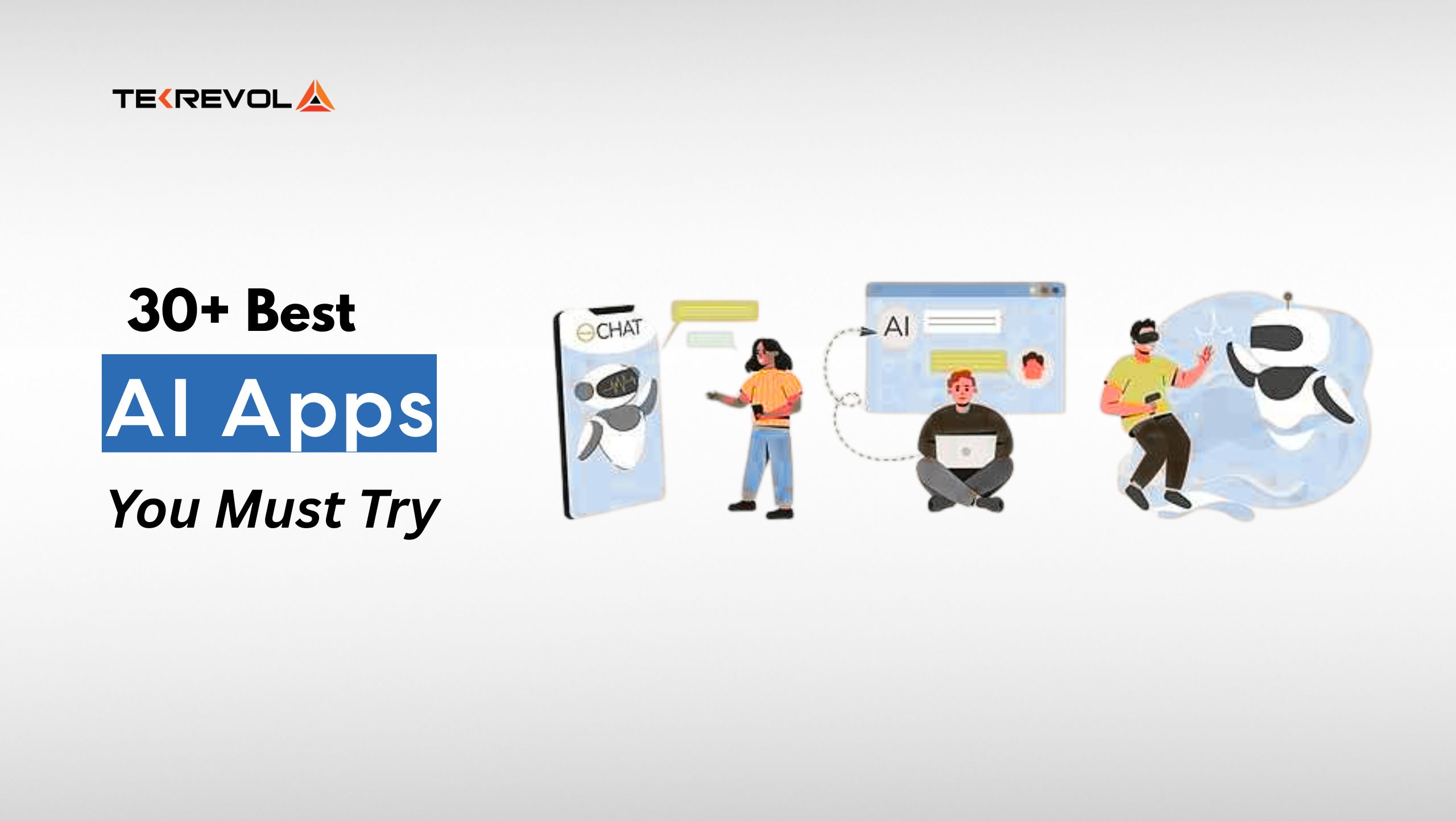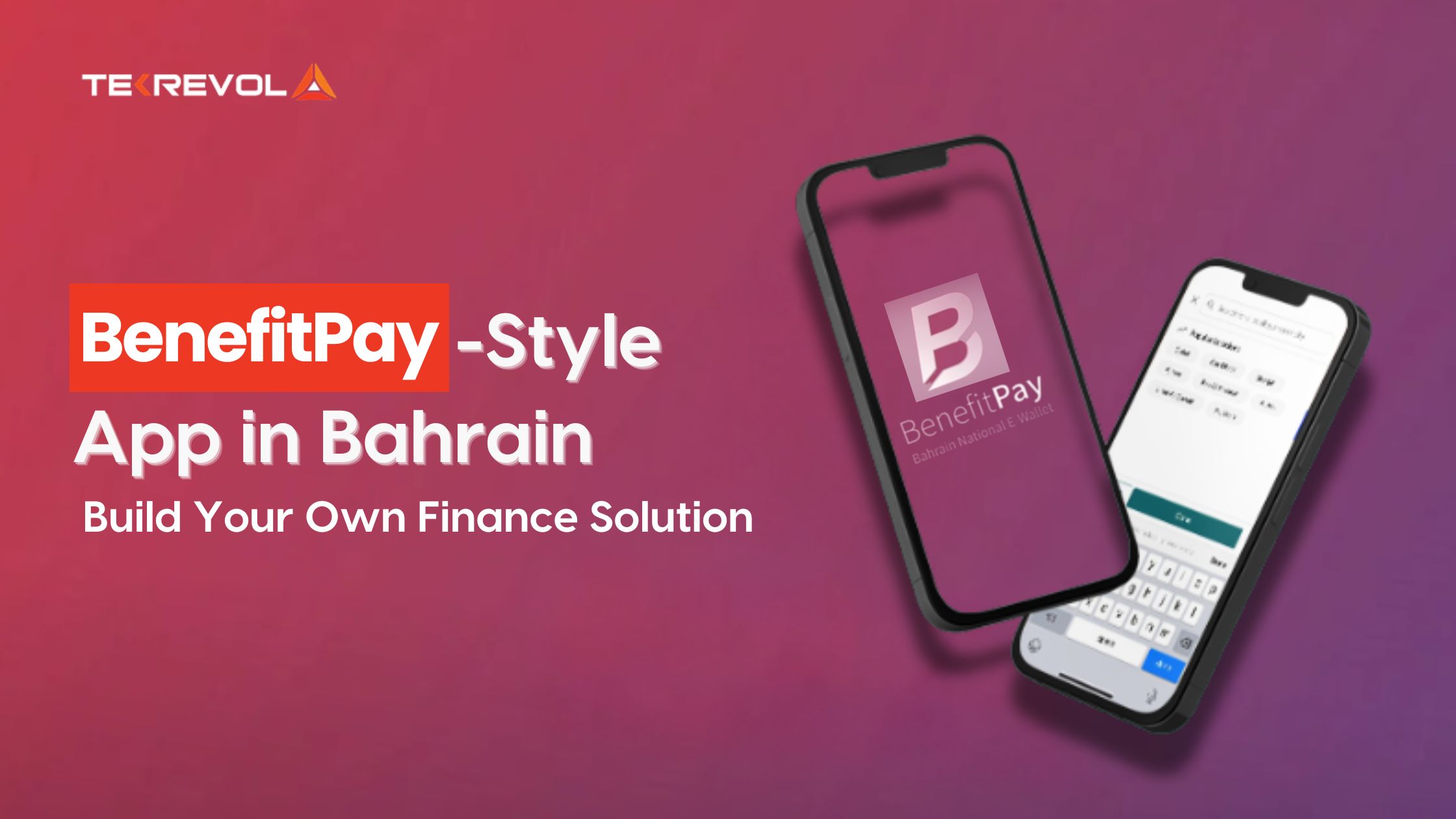It can be difficult to find the right software developer to bring your unique business idea to digital life. That’s because, after the 2000s, the world saw rapid technological advancements, resulting in various software products.
But when you move out in the market to avail a software or app development service, you meet tens of different professionals who have hundreds of different ‘jargon’ to offer.
In this situation, choosing a firm that “prioritizes your interests” and “fulfills its promises” can be daunting. But we are here to help!
This article comes in handy with 18 different software development types and approaches that will help you differentiate and choose the best service for your business. So, without any further ado, let’s begin!
What Is Software Development?
Software development is the process of building any kind of application program that performs a specific function on a specific device. In fact, over 98 million new software development projects were initiated globally on GitHub in 2023, highlighting the explosive growth and demand in the field.
It involves programming the code, testing, debugging, introducing updates, and maintaining software.
There are different types of software programs based on their function, features, scope, size, and development approach. Simple computer games like Mario to feature-rich mobile applications like Uber and Instagram are all examples of software programs.
18 Different Types of Software Development – Explained
While we have these different types of software development, there are also different types of software developers and engineers who do know the theoretical basics of each type of development, yet have expertise in one or two specific fields.

Here’s a list featuring 18 different types of software development, which will help you choose the best custom software development company for your next million-dollar app idea!
Types of Software Development According To Devices
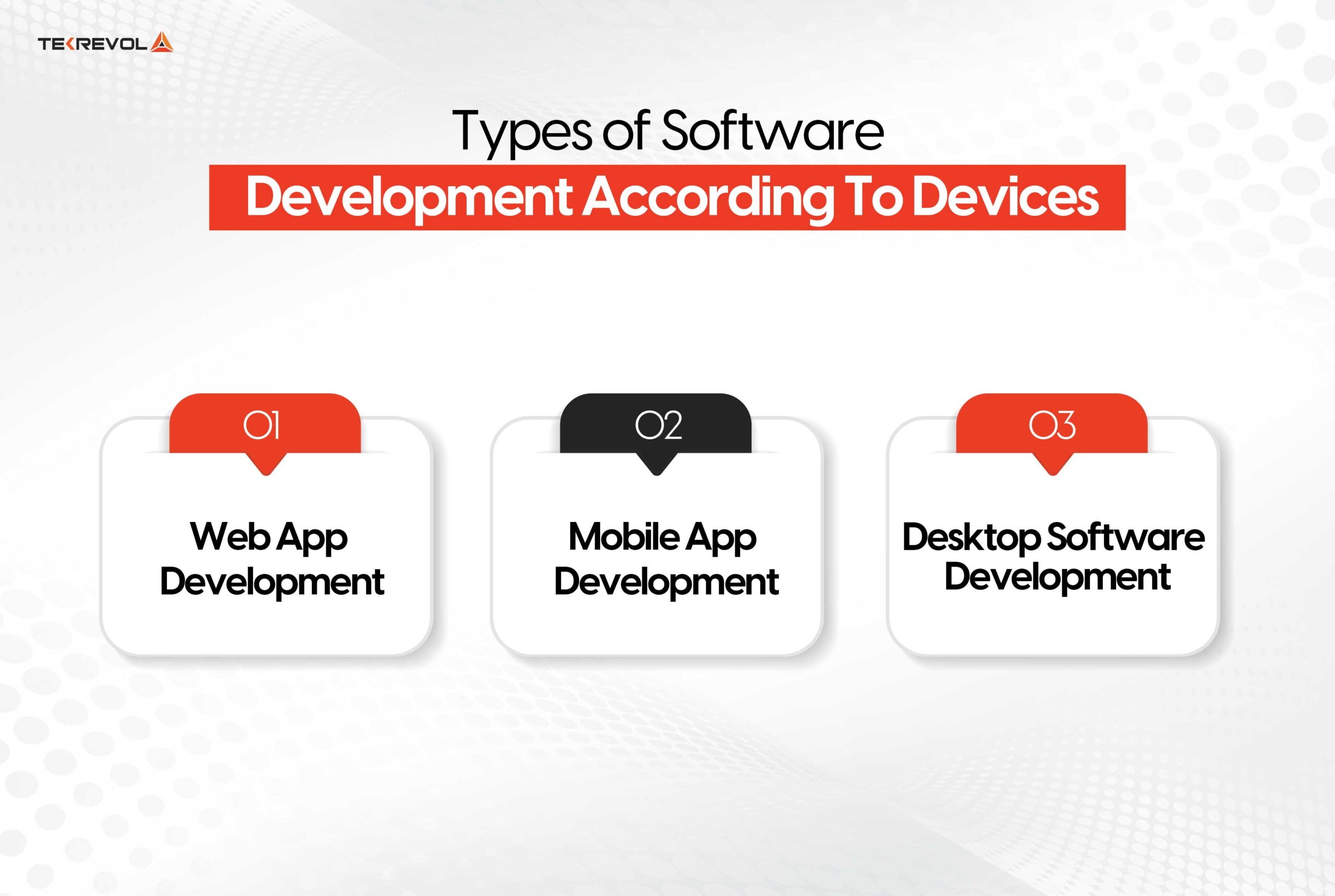
1. Web App Development
Web development is the process of creating browser-based applications. It includes everything from coding an application that works on a browser to programming advanced features to maintenance and support.
These apps are hosted on the web and need a network connection to function. Because they can be accessed and used on web browsers, web applications can run on multiple platforms, including desktops, smartphones, and tablets.
Why should businesses opt for web app development?
- Sell a product or service via a web app with e-commerce features.
- Improve user engagement and retention.
- Collect data about your target users and send personalized recommendations.
2. Mobile App Development
As the name suggests, mobile app development is the process of building smartphone applications and software programs that run natively on smartphones, typically with Android and iOS operating systems.
With almost every business going digital, the need for mobile app development services is growing exponentially. To acquire a larger number of customers, businesses are developing native and hybrid apps that perform similar functions on multiple operating systems.
Considering the functionality and platform orientation in smartphone applications, subtypes of mobile app development have also stemmed, including native app development (Android and iOS app development), cross-platform app development, ecommerce app development, social media app development, and so on.
Why should businesses opt for mobile app development?
- Acquire new users and expand your reach.
- Invest in a mobile app to experience higher returns on investment.
- Provide another, electronic outlet to your customers.
- Let your product or service buyers engage with you through smartphones.
Considering the growing importance and commercial values of business apps, mobile app development companies usually have cross-functional teams with business analysts, strategic advisors, and project managers alongside developers to guide their clients on how to make money with business apps.
3. Desktop Software Development
Desktop software development refers to creating applications and software programs that work on desktop and laptop devices with Windows, Mac, or Linux.
Unlike web apps, desktop software solutions are stored on a computer’s local storage and do not usually require a network connection for major functionality. Most desktop software programs (except video games) are developed to facilitate desktop users.
Desktop software developers commonly use Java, C++, C#, and Python to develop computer programs. Microsoft Office is the most common example of desktop software development.
Why should businesses opt for desktop software development?
Desktop software development is ideal for companies that offer offline services and dashboard analytics products.
- Process your users’ real-time data.
- Show them on-screen real-time analytics.
Types of Software Development According to Development Tiers
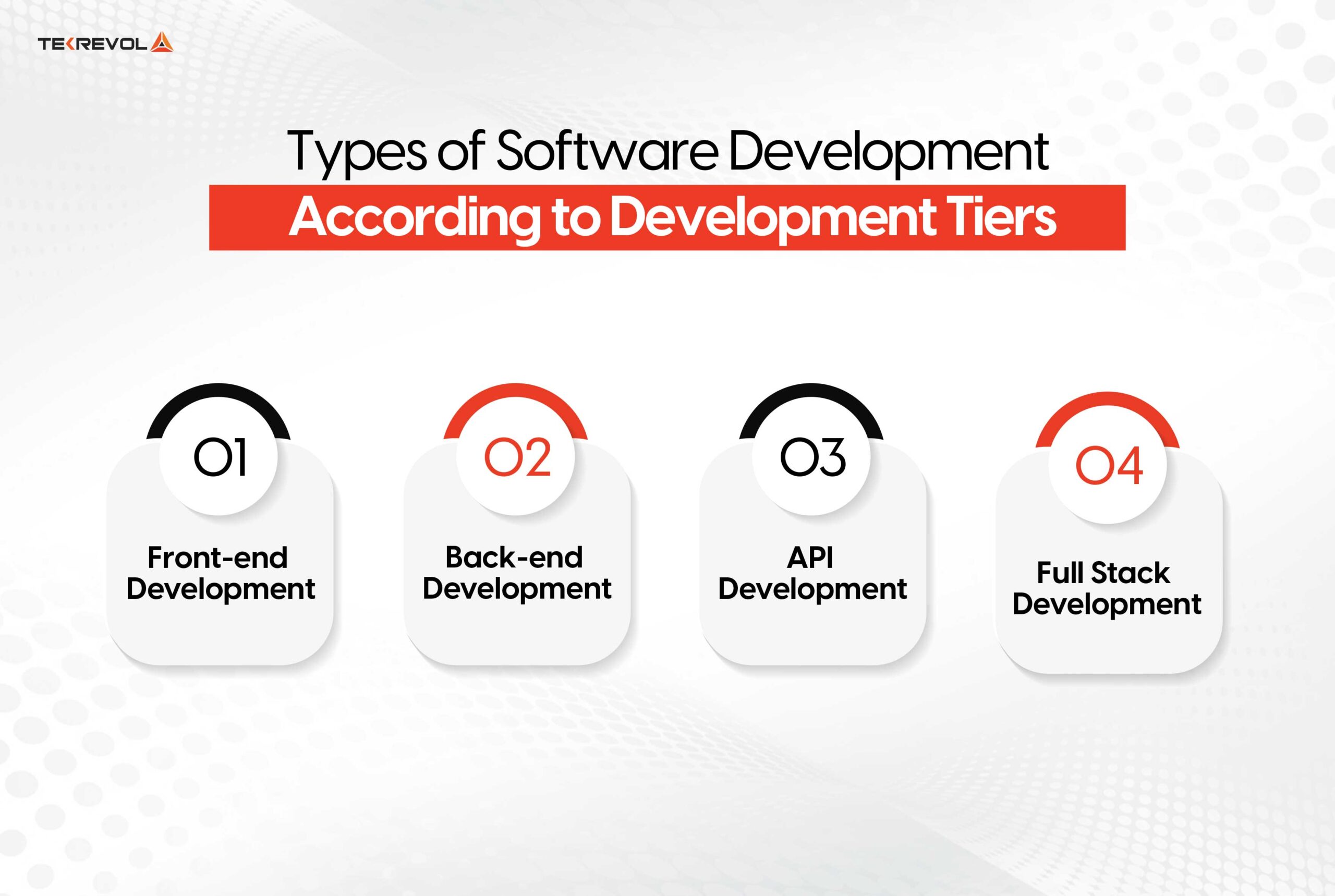
4. Front-end Development
Front-end development is the process of creating the on-screen app features that an end-user interacts with. Programming the functions and workflow of the user interface is one of the major tasks in front-end development.
While back-end development is for server-side, front-end development is called client-side development as well.
If you see the structural side of an application program, the front end is the top development layer. It comes before the API and the back end in the software development lifecycle. The API is the middle layer, and the back end is the last. However, front-end, back-end, full-stack, and API developers working together is still the best practice in the industry.
Though front-end developers aren’t required to design an application or software program (that’s what web designers do), their role requires them to strike the right balance between technology, design, programming, and usability. That’s why they work closely with designers, back-end developers, and especially Flutter developers, so their on-screen features work similarly on multiple platforms.
5. Back-end Development
Back-end development is the process of coding and programming the server side of software. Back-end developers then create the core functional foundation of any application or program.
As the name suggests, the back end is the side of a computer program or a mobile app that an end user doesn’t see or interact with. However, a product’s major functionality and performance depend on how robust the back end is.
The features, for example, saving data and fetching results, are the technical specifications of back-end development. If an app or computer program suddenly or repeatedly crashes while running, know that there are problems with the code in the back-end development of the program.
The best custom software development company can ensure that the data (a user feeds in the front end/screen of an application) is stored, returned correctly, and exchanged with the relevant functions in the program. Therefore, back-end development also involves a large chunk of database management.
6. API Development
API development is the process of building and maintaining the middle layer between the program’s front end and back end.
API, abbreviated as Application Programming Interface, is the intermediary between application programs’ front-end features and back-end code. These are sets of codes and instructions that allow the flow of information between internal and external access points.
Therefore, API development ensures smooth communication between these layers and a seamless exchange of data and information with third-party tools and applications.
7. Full Stack Development
Full stack development involves building the front-end and back-end of applications and debugging them.
Theoretically, full-stack development includes everything done to develop a software program from the bottom up: building the client-side and server-side, joining them through APIs, and testing the applications for bugs and crashes.
Types of Software Development By Product

8. Game Development
Game development is the process of creating video gaming applications. Because games have specific concepts, they require software and code (set of instructions) that perform the predefined functions in a game environment.
Game development involves steps such as concept generation, defining the front-end game features, programming the back-end game code, testing the game product, and releasing it in the market.
Game developers can take different approaches depending on the device they are developing the game for. The technical specifications differ depending on whether the games are designed for desktops for offline functionality, web applications for online game participation, or smartphones.
Games can also be created using the cloud computing development method and hosted on game streaming services.
9. Software Tools Development
Software tool development is the process of building parts of programs, kits, and related tools that other professionals can use to create, maintain, or test their computer and mobile applications.
In the software tool development process, a professional programmer creates smaller software that can be used as parts of other programs or mobile apps. From a logical standpoint, these tools and kits themselves are software programs made of code yet limited to their core functionality. Their target end-users are not software users but other software developers.
Common software tool development examples include penetration testing kits and Android and iOS SDKs. In fact, Flutter, a modern software development kit brought by Google,e is also a software development tool.
10. Security Engineering
Security engineering, also known as security system development or security software development, is the process of building cybersecurity tools, frameworks, and penetration kits for an organization’s overall network and IT infrastructure.
Cybersecurity engineering involves sub-functions like penetration testing (aka ethical hacking), data breach security management, and information system management. Security engineers, or cybersecurity specialists, have one core objective: to protect the internal technical infrastructure of any organization from external, malicious attacks.
Considering the core objective of security development, logically, this field of software development is one of the most sensitive and one with an expansive scope.
Why should businesses opt for security development?
- Protect your organization’s IT and network infrastructure from hacking attempts.
- Strengthen the security and privacy of your organizational data.
- Audit, evaluate, and improve the security standards of your hardware and software.
11. Cloud Computing Development
Cloud computing and development are the processes of building applications and software programs that are stored on a network of computers over the Internet—not on the typical local storage of devices.
Traditional software programs are developed and stored on the hard drive or other storage media devices of computers, let’s say. And that’s where cloud computing makes a difference.
Cloud computing allows the end users to utilize the application program in any way they want. However, the program is not on their specific hardware but on a remote computer connected through the Internet.
SaaS products and media storage software programs are the most common examples of cloud computing development. Dropbox, Google Drive, and Hubspot’s CRM and marketing software programs are leading cloud-based applications.
In fact, pretty much every software program we use online these days, such as video conferencing tool Zoom, task management program Trello, and payment processor Square, is a result of cloud computing.
Why should businesses opt for cloud software development?
- Avail or offer software services to your clients.
- Subscribe to a software tool without paying the full price.
12. Database Development
Database development is the process of analyzing data requirements and building newer systems and subsystems that will utilize the relevant collected data. In database development, engineers design fully functional data operation systems, and it’s usually practiced in data-driven organizations, such as marketing companies and financial organizations.
Database development is a type of software development. Still, it is more of an approach to automating the utilization of operational data and minimizing dependence on human personnel for processing such data.
Therefore, in database development, engineers initiate by setting requirements for data collection and utilization. Then, they build infrastructures that automatically gather data based on the defined organizational principles, then classify, analyze, and take further actions.
Some users get confused between database administration and database development. The former only involves data management and security, while the latter involves building an application that automates the overall utilization of data within an organization.
13. Embedded Systems Development
Embedded systems development is the process of building applications and software programs that run on unconventional hardware rather than traditional computers and laptop devices. These hardware devices that use embedded systems are connected to Wi-Fi and work in a network.
Take the example of smart home devices, thermostats, and alarm systems that run on Wi-Fi. These hardware devices are different from traditional computers, yet still require software to function.
Digital cameras, DVD and music players, medical equipment, and smart home systems are examples of embedded system development.
Types Of Software Development By Integration Technology
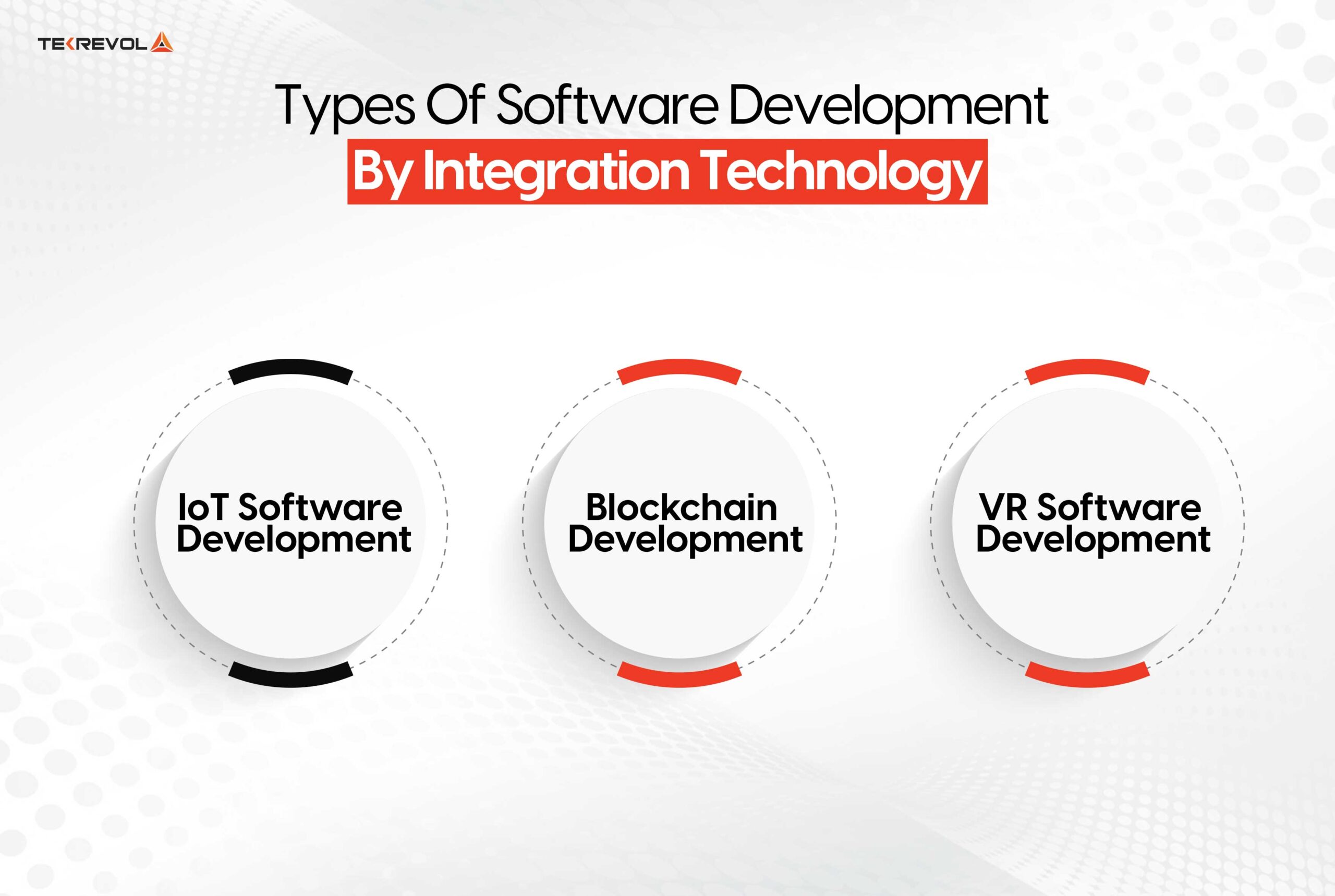
14. IoT Software Development
IoT software development involves building software programs that connect different devices and work together. This involves creating access points that exchange data to and from other hardware and software.
Quite related to embedded systems development, IoT development allows connections and the flow of information within a network of routine-use hardware. That’s why IoT software development often contains code that works as sensors and transmits real-time performance data between devices.
In embedded systems, developers create standalone software programs to make unconventional hardware work. At the same time, IoT is an advanced application of these systems where multiple embedded subsystems work together to make a bigger system.
Smart home settings are the most prominent example of IoT software development. Alarm software processes the time for a user’s entry inside the home, while the connected IoT software switches on the AC or heater to prepare the room environment for the user.
15. Blockchain development
Blockchain development is the process of building software programs that solely or partly utilize blockchain technology and cryptocurrency. Considering the growing commercial value of different cryptocurrencies, startup owners and enterprise-level businesses have started integrating blockchain technology into their business operations.
Applications like MetaMask and Binance are common examples of blockchain development. The tech world is now seeing mobile applications that use cryptocurrency and blockchain strings as payment gateways to facilitate the receipt and transfer of payments globally.
Why should businesses opt for blockchain development?
- Send and receive payments from around the world at lower transaction costs.
- Give an alternate, additional payment method to your clients.
- Leverage the growing value of Ethereum coins and make capital gains.
- Enjoy a decentralized ledger of your business transactions.
- Learn more about how to make your cryptocurrency token.
16. VR Software Development
VR Software development is the process of building mobile apps, web apps, and desktop programs that use virtual reality (artificial 3D) environments. Ecommerce virtual shopping applications and training programs use VR integration modules so that end-users can virtually ‘live’ the environment.
Why should businesses opt for VR development?
- Give an enhanced shopping experience to your clients.
- Let them test and try your products and services in virtual reality.
Types of Software Development By Development Approach
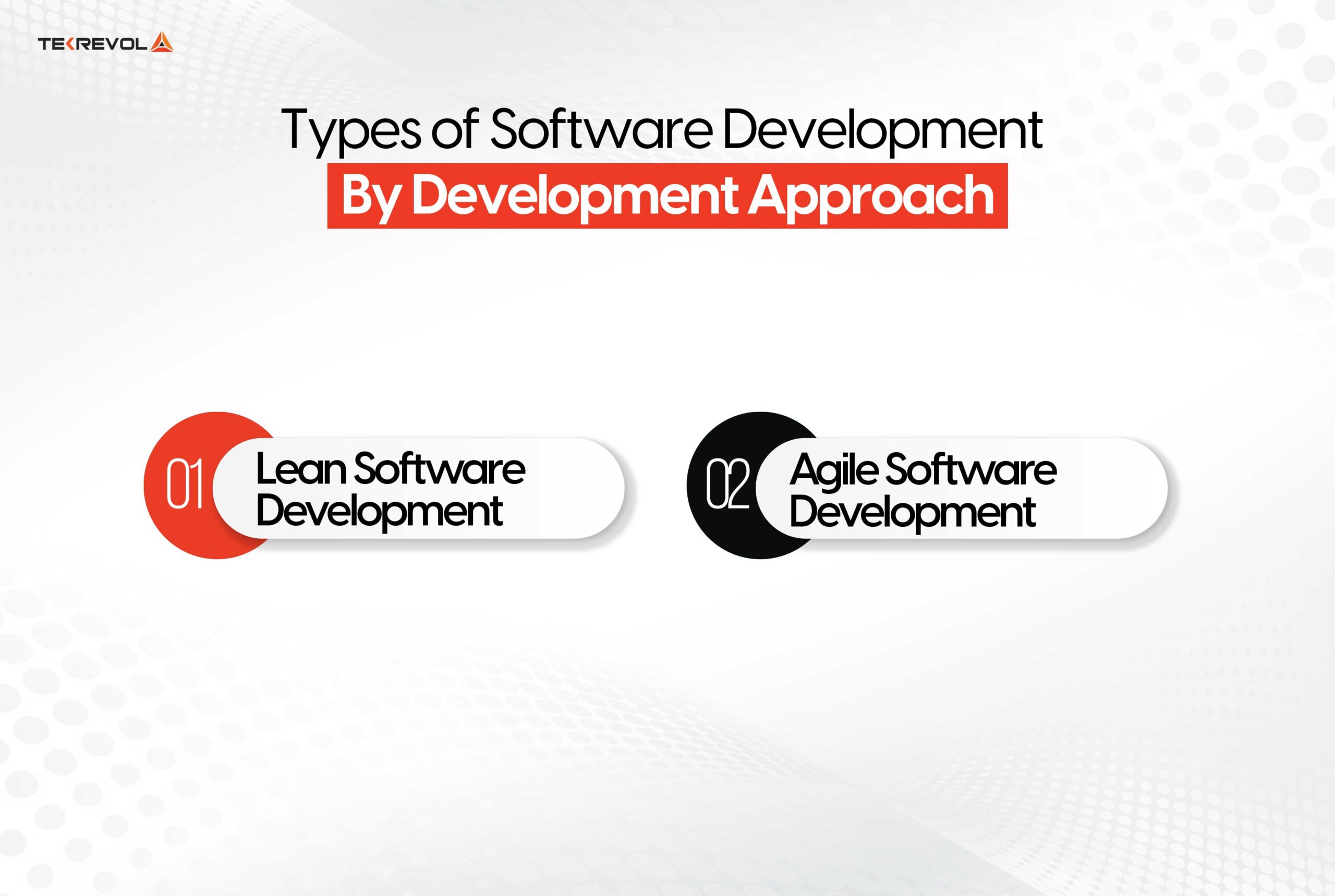
17. Lean Software Development
Lean software development NYC is a process in which the product is the core focus. According to this approach, the resulting software program should be cost-effective, built in the stipulated time, and strictly adhere to the original software development plan in terms of its functions and features.
18. Agile Software Development
Agile software development is an approach in which ‘process’ and ‘workflow’ are the core focus. It emphasizes value addition and allows flexibility to improve software during the process.
Software programs developed through agile methodology are more customer-centric, while products made in lean methodology are technically complete and error-free.divider
Partner with TekRevol for Your Software Development Needs
At TekRevol, our motto is to revolutionize the business ecosystem. We follow modern app development methods and use a mixture of these development types, technologies, tools, and approaches based on the nature of the product and the type of target users our software products cater to.
By working with Tekrevol, you will enjoy:
- Comprehensive Expertise: Proficiency across all 18 software development types, ensuring tailored solutions for diverse business needs.
- Proven Track Record: A portfolio of successful projects across various industries, reflecting our commitment to quality and innovation.
- Client-Centric Approach: Collaborative processes that prioritize your vision, ensuring the final product aligns with your goals.
- Scalable Solutions: Developments designed to grow with your business, adapting to evolving market demands.
Conclusion
As classified in this article, you can look at software development and software products from different technical standpoints and approaches. So, you can’t look at a software product and decide which category it should strictly fall in.
While service businesses create and capitalize on cloud computing software programs, business owners opt for custom software development to fully control their digital assets and data.
TekRevol stands ready to guide you through this, offering expertise across all software development domains. Our commitment to innovation, quality, and client satisfaction ensures that your software solutions are not only functional but also strategic assets for your business.

 12838 Views
12838 Views July 15, 2024
July 15, 2024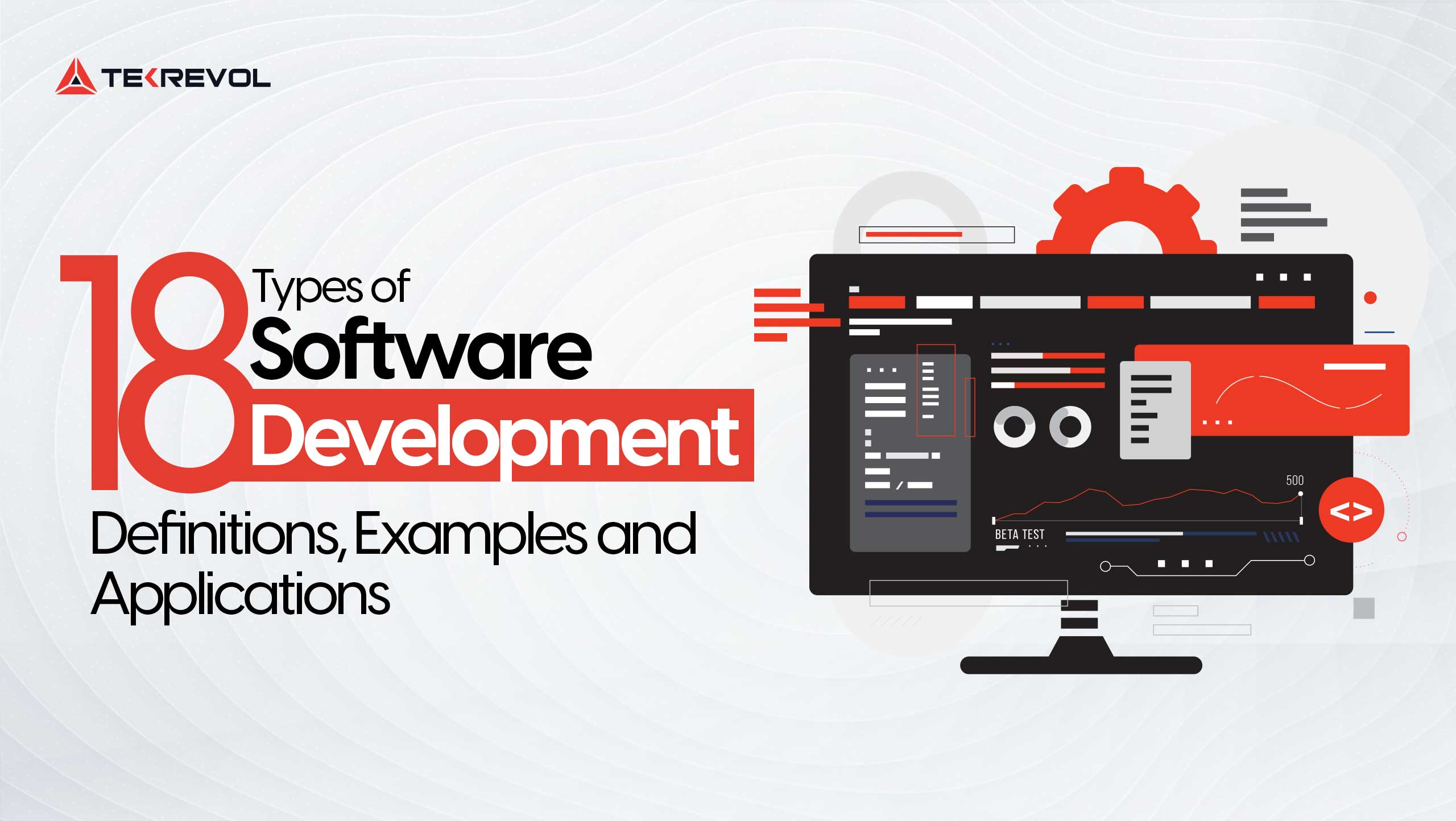



![10 Best Smartwatch Apps [2025 Updated List]](https://d3r5yd0374231.cloudfront.net/images-tek/uploads/2022/04/Blog-info-27-scaled.jpg)
